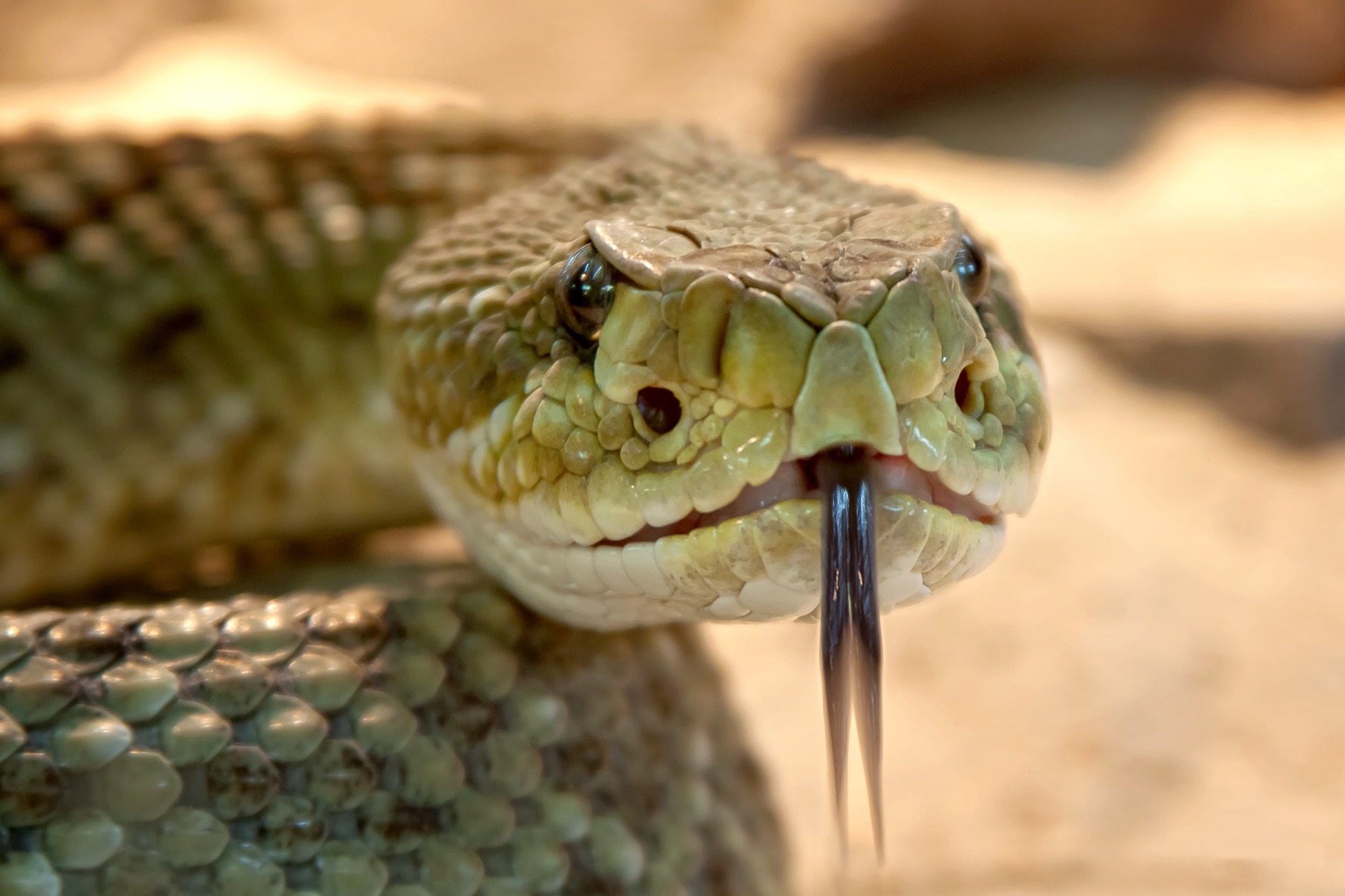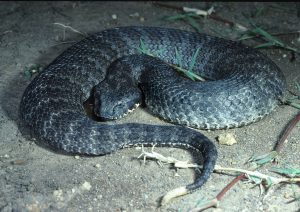Snakes are the reptiles which scares us lot. aren’t they? So in this post we will be ranking world’s most deadliest snakes. We have researched many factors about snakes and come up with the factors which are most relevant to make a snake deadly. We have studied below significant factors about snake.
- Venom Toxicity
- Bites per year
- Venom yeild
- Disposition
Using above factors we have built a formula to measure the deadliness of a snake. We have given more weightage to “Venom Toxicity” and “Bites per year” as compare to other factors. “Venom Yield” is the second factor in terms of weightage. We have given less weightage to “Disposition”.
15. King Brown Snake or Mulga Snake (Pseudechis austalis)
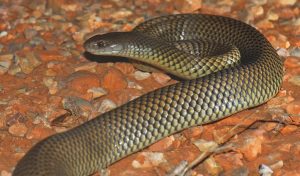
King brown snakes occur in all states of Australia except for Victoria and Tasmania.
The venom is not as potent as those of Australia’s other dangerous snakes, but can still cause severe effects if delivered in large enough quantities.There is often extensive pain and swelling, and rarely necrosis, at the site of the bite.
The king brown snake can reach 2.0 to 2.5 m (6.6 to 8.2 ft) in length.
14. Blue Krait (Bungarus candidus)
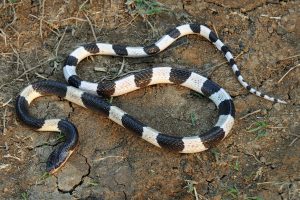
The Blue krait (Bungarus caeruleus), also known as Indian krait or common krait is a species of venomous snakes found in the Indian subcontinent. It is a member of the “big four” species, inflicting the most snakebites on humans in India.
These snakes are normally remain sluggish in day time but the become very active in night.
When agitated, it will coil up with its head concealed and body flattened, and makes jerky movements. It may also lift its tail. It is reluctant to bite, but when it does, it typically holds on for a while, which enables it to inject considerable amounts of venom. It may become aggressive at night if threatened since this is its active time.
If bitten by a krait while sleeping, a victim may not realize he has been bitten, as the bite feels like that of an ant or mosquito. The victim may die without waking up.
13. Egyptian Cobra (Naja haje)
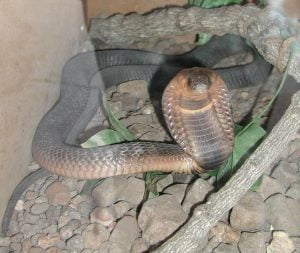
Egyptian Cobras are native to Africa and it is a one of the largest snake of African continent.
The average venom yield is 175 to 300 mg in a single bite, and the murine subcutaneous LD50 value is 1.15 mg/kg.
The venom affects the nervous system, stopping the nerve signals from being transmitted to the muscles and at later stages stopping those transmitted to the heart and lungs as well, causing death due to complete respiratory failure.
12. King Cobra
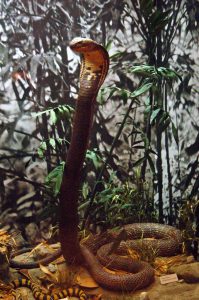
Everyone knows this snakes. It is a brand. It is the world’s longest venomous snake.Adult king cobras are 3.18 to 4 m (10.4 to 13.1 ft) long. The longest known individual measured 5.85 m (19.2 ft).
The king cobra is not considered aggressive. It usually slinks off when disturbed, but is known to aggressively defend incubating eggs and attack intruders rapidly. When alarmed, it raises the front part of its body, extends the hood, shows the fangs and hisses loudly. When biting, it retains its grip for up to eight minutes.
It can be easily irritated by closely approaching objects or sudden movements. When raising its body, the king cobra can still move forward to strike with a long distance, and people may misjudge the safe zone. It can deliver multiple bites in a single attack.
It can deliver up to 420 mg of venom in single bite.
11. Common Lancehead or Fer-de-Lance (Bothrops atrox)
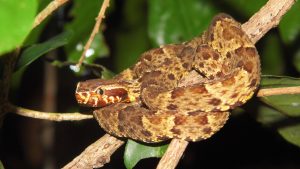
Common Lancehead or Fer-de-Lance found in south and central part of America. A terrestrial species, adults usually grow to a total length 75–125 cm (about 30-50 inches) and are moderately heavy-bodied.
Their venom consists mostly of hemotoxin, a toxic protein that affects the circulatory and nervous system; it destroys red blood cells, and sometimes loss of memory occurs. They are much feared because their venom is particularly lethal and fast acting.
Venom yield averages 124 milligrams, although it may be as much as 342 milligrams.
10. Eastern Brown Snake (Pseudonaja textilis)
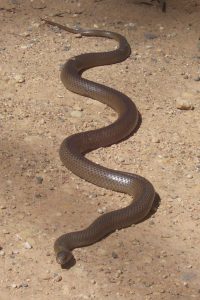
Eastern brown snake is a world’s second-most venomous land snake after the inland taipan (Oxyuranus microlepidotus), based on its LD50 value (subcutaneous) in mice, it is responsible for about 60% of snake-bite deaths in Australia. These snakes are native to eastern and central Australia and southern New Guinea.
Many people mistake defensive displays for aggression.When confronted, the snake rises up vertically high off the ground,coiling its neck into an S shape, and opening its mouth.The snake is able to strike more accurately from a full display and more likely to deliver an envenomed bite.
The adult eastern brown snake is up to 2 m (7 ft) long.
9. Common Cobra (Naja naja)
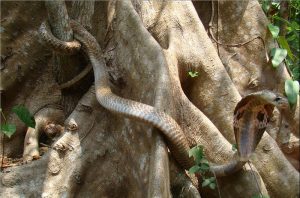
Common Cobra or Indian Cobra are native to India, Pakistan, Bangladesh, Sri lanka, Nepal and Bhutan. This snake is a member of the “big four” species that inflict the most snakebites on humans in India.
Whenever we heard the word Cobra. One thing immediate comes in our mind “a snake showing its Hoodie”. isn’t it? Common cobra is famous for this its hoodie like other cobra species.
An adult specimen ranges from 1 to 1.5 metres (3.3 to 4.9 ft) in length.
8. Death Adder (Acanthophis antarcticus)
Death adders are native to Australia and this is most dangerous land snake in Australia. It can reach a maximum body length of 70–100 centimeters (2.3–3.3 ft).
Death adders possess the longest fangs of any Australian snake.
The common death adder venom contains highly toxic neurotoxin which can cause paralysis or even death. It can deliver the fastest strike among all venomous snakes recorded in Australia. Human death can occur within six hours after the bite.
7. South American Rattlesnake (Cascabel or Crotalus terrificus)
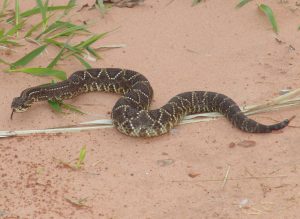
This snakes mostly found in southern part america.
Rattlesnakes receive their name from the rattle located at the end of their tails, which makes a loud rattling noise when vibrated that deters predators or serves as a warning to passers-by. Rattlesnake populations in many areas are severely threatened by habitat destruction, poaching, and extermination campaigns.
Rattlesnakes are the leading contributor to snakebite injuries in North America. However, rattlesnakes rarely bite unless provoked or threatened; if treated promptly, the bites are seldom fatal.
Adults usually vary in length from 0.5 to 2 meters (1.6 to 6.6 feet), but some can grow to 2.5 meters (8.2 feet).
6. Puff Adder (Bitis arietans)
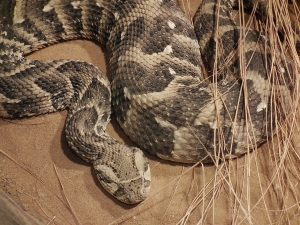
The puff adder is a venomous viper species found in savannah and grasslands from Morocco and western Arabia throughout Africa except for the Sahara and rain forest regions. This species is responsible for more snakebite fatalities than any other African snake. This is due to a combination of factors, including its wide distribution, common occurrence, large size, potent venom that is produced in large amounts, long fangs, their habit of basking by footpaths and sitting quietly when approached.
If disturbed, they will hiss loudly and continuously, adopting a tightly coiled defensive posture with the fore part of their body held in a taut “S” shape. At the same time, they may attempt to back away from the threat towards cover. They may strike suddenly and fast, to the side as easily as forwards, before returning quickly to the defensive position, ready to strike again. During a strike, the force of the impact is so strong, and the long fangs penetrate so deeply, that prey items are often killed by the physical trauma alone. The fangs apparently can penetrate soft leather.
Average size of this snake is 1 Meter.
5. Barba Amarilla or Fer-de-Lance (Bothrops asper)
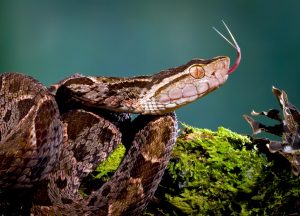
Barba Amarilla or Fer-de-Lance snake found in central and north america. This snakes has killed many people than any other American reptile.
These snakes have been described as excitable and unpredictable when disturbed. They can, and often will, move very quickly, usually opting to flee from danger, but are capable of suddenly reversing direction to vigorously defend themselves. Adult specimens, when cornered and fully alert, are dangerous.
Far de Lance can inject an average of 105mg venom into body when bitten. Lethal dose for human is 50mg.
4. Russell's Viper (Daboia species)
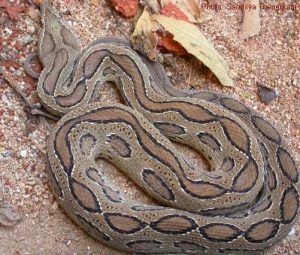
Image by Sandilya Theuerkauf, Wynaad is licensed under CC BY-SA 2.5
Russell’s Viper is found in India, Sri Lanka, Bangladesh, Nepal, Myanmar, Thailand, Pakistan, Cambodia, Tibet, China (Guangxi, Guangdong), Taiwan and Indonesia. It is one of the snakes from the group “Big Four” which is responsible for most snake bites in India.
When threatened, they form a series of S-loops, raise the first third of the body, and produce a hiss that is supposedly louder than that of any other snake. When striking from this position, they can exert so much force that even a large individual can lift most of its body off the ground in the process. These snakes are strong and may react violently to being picked up. The bite may be a snap, or they may hang on for many seconds.
3. Saw Scaled Viper (Echis carinatus)
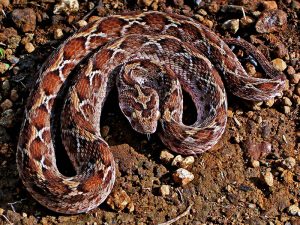
Image by Shantanu Kuveskar is licensed under CC BY-SA 4.0
Saw Scaled Viper is a relatively small snake (ranging between 30cm to 80cm) but extremely venomous and aggressive in nature. Saw-Scaled Viper is one of the snakes from the group “Big Four” which is responsible for most snake bites in India. They have a characteristic threat display, rubbing sections of their body together to produce a “sizzling” warning sound. This species found in Central Asia, Middle East, Africa and Indian Subcontinent.
The blood-thinning venom from this species is used in the manufacture of several drugs.
2. Black Mamba (Dendroaspis polylepis)
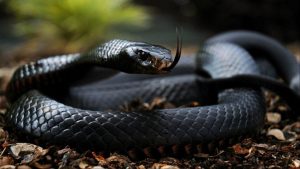
Athlete of all the snake species. These snakes are extremely aggressive. These snakes are found in Africa. Black mamba is fifth most venomous snake in the world that is why we are giving massive 100 out of 100 point for venom categories.
In one strike Black mamba can bite several time and can yield up to 40 mg of venom.
Average size of Black Mamba is 3m.
1. Coastal Taipan (Oxyuranus scutellatus)
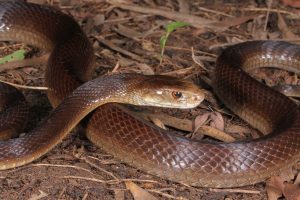
And the winner is here Coastal Taipan. Coastal Taipan is a third most venomous snake in the world after Inland Taipan and Western Brown snake. This snake found in east and north coastal areas of Australia. The average venom yield per bite is 120 mg,with a maximum record of 400 mg.
This snake is lot quicker than its cousins Inland Taipan and Papuan New Guinea Taipan. This snake is considered to be the most aggressive in nature.
Every year 600 people gets bitten by this snake.

